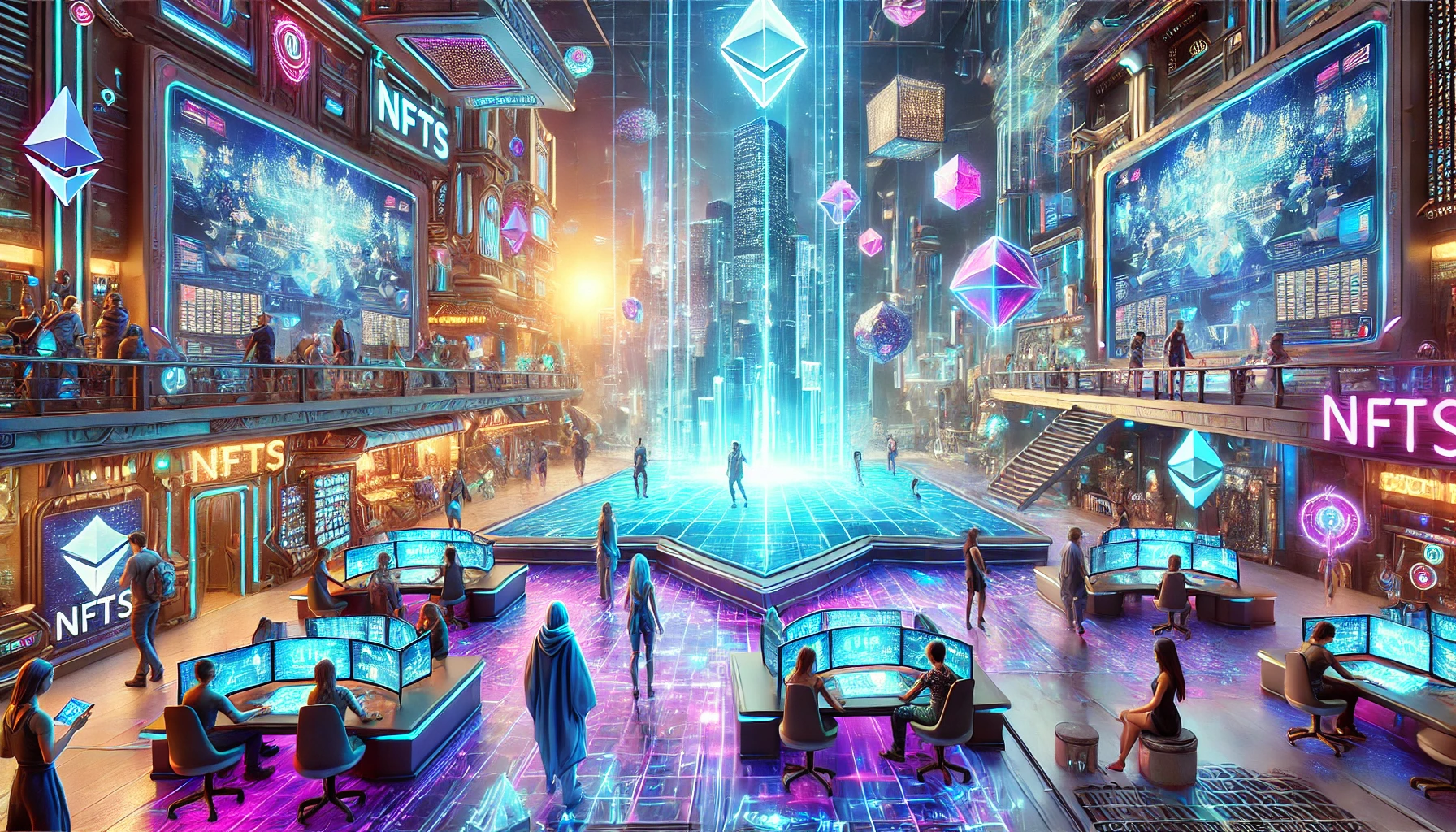The Next Frontier of NFTs: Gaming and Virtual Economies

NFTs and Gaming: A Match Made in Virtual Heaven
NFTs, or Non-Fungible Tokens, have become the hottest topic in the digital world, from art auctions to collectible trading cards. But where NFTs are making a massive splash is in gaming. Virtual real estate, in-game assets, and unique character skins are just the tip of the iceberg. But why are NFTs reshaping gaming? Well, it's about ownership—players no longer simply use digital assets; they own them. This ownership transfers the power from developers to players, creating new virtual economies that rival traditional markets. In games like Decentraland and The Sandbox, players are buying virtual real estate for hundreds of thousands of dollars, treating their in-game spaces like physical property in the real world.
Virtual Economies: Blockchain-Powered Trading Floors
The shift toward blockchain-based gaming economies introduces a concept that gamers have long wanted: monetization. In traditional games, items like rare swords or character skins exist within a walled garden—meaning they can’t be traded or sold for real-world money. Blockchain turns this on its head. Games like Axie Infinity allow players to breed, battle, and trade NFT creatures, with some individuals earning over $1,000 a month through gameplay alone. According to a report by DappRadar, blockchain-based gaming generated $4.5 billion in revenue in 2023, with a projected growth rate of 10-15% annually. This emerging ecosystem is proving not only lucrative for players but also sustainable for developers.
The Scalability Problem: How to Handle Millions of Microtransactions
Of course, all that glitters in the NFT world is not gold—or blockchain, for that matter. One of the biggest hurdles remains blockchain scalability. Imagine a popular multiplayer game where thousands of players are buying and selling items simultaneously. Each transaction needs to be validated on the blockchain, which can slow down the game if the system isn’t scalable enough. Ethereum, for instance, has faced this issue, causing games to look at Layer 2 solutions like Polygon to handle the increased demand. By offloading smaller transactions to these secondary layers, games can avoid clogging the main Ethereum chain, ensuring smoother experiences for players while keeping gas fees manageable.
NFTs as the New Building Blocks of Virtual Economies
As virtual economies grow, NFTs are becoming the digital gold standard. But it’s not just about gaming anymore—NFTs are transforming how we perceive value in the virtual world. In Second Life 2.0 (okay, maybe not really, but close), players can buy islands, create businesses, and hold events, all within a blockchain-secured world. The key here is decentralization. Players control what they own, how they trade, and the value these assets hold. With NFTs, the digital economy is growing into something more than just a space to have fun—it’s a space to invest.
NFT Gaming and Beyond: What Lies Ahead
While we’re still in the early stages of NFT gaming, the future looks incredibly bright. In fact, experts predict that by 2026, the virtual goods market—fueled by NFTs—will reach $190 billion globally. That’s almost the GDP of New Zealand, folks. Whether it’s creating entire worlds where players can generate income or simply providing unique collectibles, NFTs are reshaping the gaming world and beyond. But it’s not just about dollars and ETH; the societal impacts could be enormous. From decentralized governance models to player-run economies, these ecosystems could radically shift how we interact with digital spaces, with blockchain making it all possible.
An Open Question for the Future
As we venture deeper into this digital frontier, one big question looms: How will traditional gaming giants like Sony or Microsoft respond to the blockchain revolution? Will they integrate NFTs into mainstream titles or stick with their existing microtransaction models? Share your thoughts on how NFTs will evolve gaming economies in the coming years. Do you think the current model of in-game purchases will survive, or will player-owned economies become the norm?



